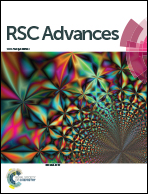Thermal and flame retardant properties of transparent UV-curing epoxy acrylate coatings with POSS-based phosphonate acrylate
Abstract
A novel branched phosphonate acrylate monomer (BPA) containing phosphorus and polyhedral oligomeric silsesquioxanes (POSS) was successfully synthesized via thiol Michael addition of tri(acryloyloxyethyl) phosphate with octamercaptopropyl POSS, and then incorporated into epoxy acrylate (EA) resins in different ratios using ultraviolet curing technology. The structure of BPA was confirmed by Fourier transform infrared spectroscopy (FTIR) and nuclear magnetic resonance. The effects of BPA on the thermal stability, combustion performance, degradation process and transparency of EA were investigated. The modified EA (MEA) retained a high transparency and exhibited significantly enhanced flame retardancy, as evidenced by the increased limiting oxygen index values and greatly reduced peak heat release rate. The thermal properties of MEA indicated that the presence of BPA promoted the degradation of the EA matrix and produced additional char residues. The thermal degradation processes of the MEA were further investigated by real time FTIR. The char structure of MEA, investigated by Raman spectra, revealed that the addition of BPA increased the ratios of graphitized carbon in residual chars, thus enhancing the thermal stability of MEA.


 Please wait while we load your content...
Please wait while we load your content...